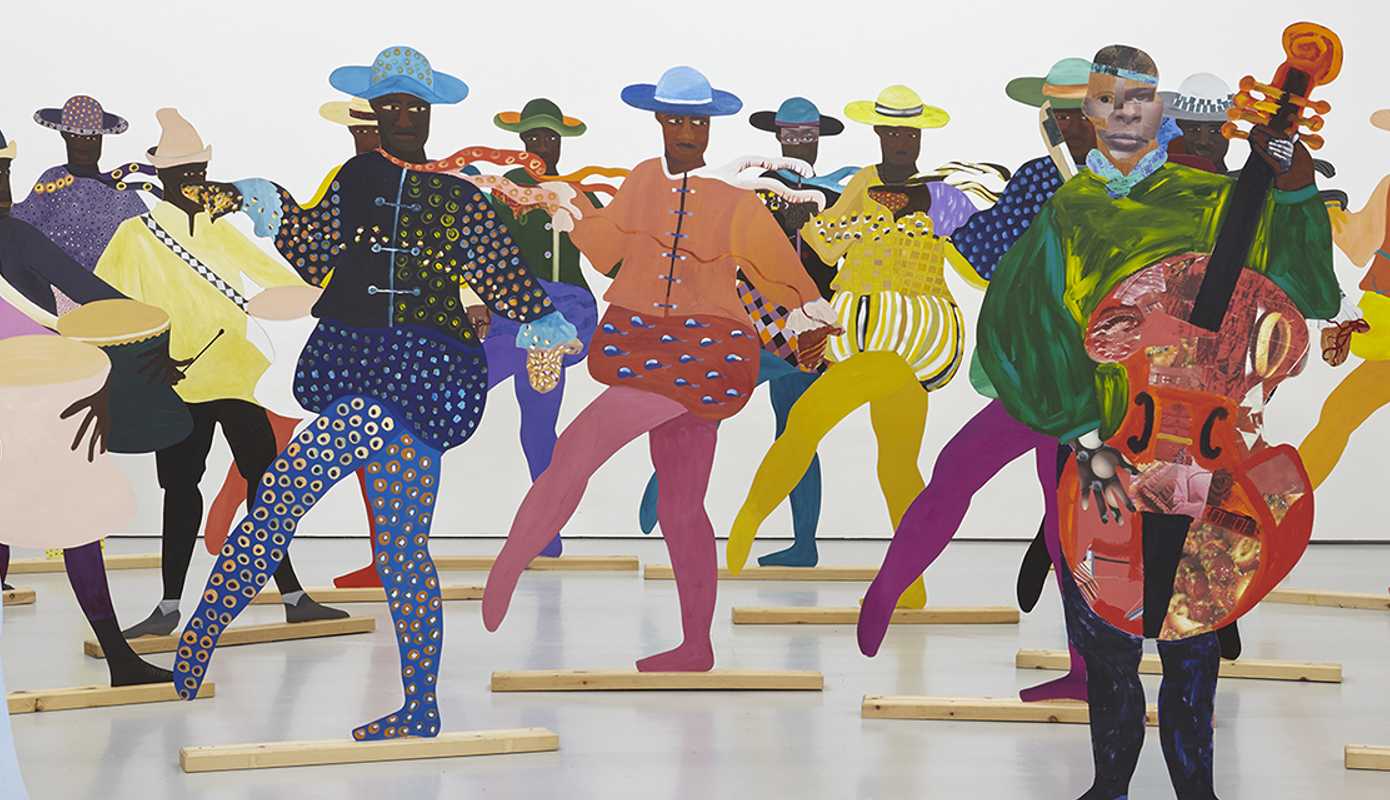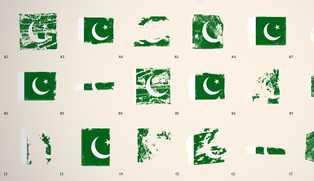Lubaina Himid was nominated for the Turner Prize 2017. And on Tuesday night she won! I was lucky enough to interview Lubaina and to visit the contemporary Spike Island Gallery in South Bristol last year, which hosted an exhibition dedicated to her unique and ground-shaking work, along with two other galleries in the United Kingdom: Modern Art Oxford and at Nottingham Contemporary. It was an unmissable occasion to plunge into her eye-opening and striking art.
Over the past two years as a freelance journalist I have been travelling between London, Paris, Bangui (Central African Republic), Calais, Erbil (Iraqi Kurdistan), Sicily and Roya Valley in the South of France. I was mostly covering the refugee crisis for different European Media outlets. At one point I ended up in Bristol, and went from covering the frontlines of the crisis, to exploring the culture of England’s West Country, a culture made up of unexpected encounters between a punk ethos and a deeply creative Caribbean population. I focused a lot on the role of the African and West Indian diasporas in the U.K, connecting these different histories and stories of migrations.
Since the beginning of 2015, I saw Bristol’s art venues host exhibitions such as the M Shed’s commemoration of the role of West Indian soldiers in the First World War, Jamaican Pulse at the Royal West of England Academy and, in January 2016, John Akomfrah’s Vertigo Sea at the Arnolfini Gallery. The latter was a mesmerizing, tragic audio-visual experience by the filmmaker and founder of the Black Audio Film Collective, comprising seven Black British and diaspora multimedia artists and filmmakers (John Akomfrah, Lina Gopaul, Avril Johnson, Reece Auguiste, Trevor Mathison, Edward George and Claire Joseph).
So in January, when I came across Lubaina Himid’s opening for the “Navigation Charts” exhibition at the Spike Island gallery, I realised how the two parts of my writing and work were linked. Himid’s profound insight into the role of the diaspora in her art was striking. In many ways, she has been a game changer in expressing and exploring these issues, from as early as the years 1980s.

Path of Changes
As one of the forefront representative of Black artists in the U.K., it is no surprise that Lubaina Himid was this year 2017 at the centre of these three concomitant exhibitions, displaying the result of decades of an eye-opening and striking work. Mixing different art forms of canvas work, installations, paintings, and sound effects, Himids’ art pieces come alive.
At the Spike Island Gallery, the Navigating Charts exhibition was a clear example of her mastery. Painted on panels standing in the Spike Island Gallery’s main room, the figures are accompanied by a sound system broadcasting these characters’ voices. Their names are written on their backside, referring to both their original African name and a newly given English name. These portraits leave you with a powerful sense of both familiarity and estrangement, creating a conversation around the meaning of fluid identities. Walking through the installation seems to open a possibility for meetings across time… Born in Zanzibar in 1954, Lubaina Himid moved to Britain as a child with her parents in the 1960s and grew up in London. She started her pathway through the art world by studying theatre design, before entering the Royal Art College and writing a thesis in cultural history on young Black artists in Britain, released in 1984. A accomplishment that quickly took her to also support other artists’ debuts, including Sutapa Biswas, Sonia Boyce, Claudette Johnson, Veronica Ryan and Ingrid Pollard.
“I was, very early on, a political teenager,” Lubaina Himid tells me on the phone from her home in Preston, a few days after the opening at Spike Island. “I went to marches, protests, it was part of my life. My mother was a textile designer and she loved anything artistic, so she took me to art galleries, and showed me the beautiful patterns she would use. So from very early on I was drawn to art that had a political force, especially Bertolt Brecht. This is why I was interested in theatre design. But I became even more politically aware after turning 20. I got interested in street theatre, which was a big thing in France in the late 1970s, but not so much in Britain. And I became more confident about my own artistic expression. Then in the 80s, of course, the political situation became more extreme in the U.K., especially for minorities.”

A Major Voice for The Black British Culture
Primarily known as a painter, Lubaina Himid’s work has been shown at the Tate Modern and the International Institute for Visual Art in London, but also the Manchester Art Gallery and the Peg Alston Gallery in New York. She became a curator in London in the mid-80s and organised the Thin Black Line exhibition at the ICA (Institute of Contemporary Arts) in 1985. Alongside all of this she continued to produce her own art.
She works on both art installations and figurative painting, using strong patterns, colours and themes. With references to slavery, forced labour, colonial history, migration and the role of the “Black” diaspora in Europe, her art stood out in the British 1990s art scene. “The good thing for me is that working with Black artists was never a lonely path. We did some early collaborative exhibitions with the Black Art Group, the Black Art Gallery in London, Nottingham, and Bristol. It was the opposite of lonely. But it was a battle, and a extra battle to say something political.” Through her series of work ‘Revenge’ in the early 1990s, Himid was able to address “the feminist critique of painting.” It comprised twelve elements: ten paintings, an installation and a drawing on paper, which included figurative pieces depicting pairs of black women in different scenes. She contemplated and reordered “the making of history”, seeing her work as “both celebration and mourning”. In 2001, she herself reflected that some of the series’ paintings were “a musing on what would happen if black women got together and started to try to destroy maps and charts – to undo what has been done”. “The space they occupy is filled with them and expands with their ideas,” said Lubaina Himid in the Rochdale Art Gallery’s catalogue, in 1992. “They have several strategies, they expand to fill the situation. The women take revenge; their revenge is that they are still here they are still artists, that their creativity is still political and committed to change, to change for the good.” A decade later, Naming the Money, presented in 2004, was the first large installation of her signature ‘cut-outs’ representing African slaves in the royal courts of 18th century Europe, put to work as ceramicists, herbalists, toy-makers, dog trainers, viola da gamba players, drummers, dancers, shoemakers, map makers and painters. Naming the Money reproduced the experience of slave migration – reflecting on both dissolving identities and on the pressures imposed by our global political and economic forces.

New Art For New Times
The three exhibitions running until last spring were not necessarily a step forward in Lubaina’s career, but more of a chance for her work to be displayed across the U.K., underlining her pioneering role in the contemporary Black British art scene. The nomination, and now her winning of the esteemed Turner Prize, has highlighted the deep and continued resonance of her achievements in a shattered society, one that has been shaken by the Brexit referendum and is constantly trying to redefine its ‘diverse’ identities and the effects recent imperial history.
“I believe we can look at the past and just sincerely ask ‘where do we go from here?’ I do think that the British people have so far been better at facing the truth of history than the French for instance,” says Lubaina. “And if they can go further, it can become a source of richness, bonding and creativity for the entire society.”
“The central theme is about how to achieve a sense of belonging. It’s about how to get a recognition of the contribution of the diasporas in our culture. Slavery is very present in today’s Britain, it’s not only an affair of the past. You see it when you look at so many buildings, at people, it’s always around me and much more visible than it was in the 1980s. Even if the detailed events related to slavery are not found in mainstream history books, I believe every part of history impacts us all the time; it does not go away”.

Exhibition details:
Navigation Charts was at Spike Island, Bristol, from 20 January to 26 March; Invisible Strategies is at Modern Art Oxford from 21 January to 30 April; The Place is Here is at Nottingham Contemporary from 4th February at 1st May 2017. The Turner prize exhibition is at Ferens Gallery, Hull, until 7 January.
Melissa Chemam is a writer and freelance journalist for different European and American radios (BBC World Service, Radio France International, Deutsche Welle, Canadian Broadcasting Corporation…) and magazines (Transfuge, Public Art Review, Nouveau Projet). She also works as a project manager and researcher for the filmmaker Raoul Peck, with his production company, Velvet Film. Her book about Bristol and Massive Attack will be released in English in the spring 2018.
Images courtesy of Stuart Whipps (photographer) and Spike Island: No.1 & 3 Naming the Money (2004) One-hundred lifesize painted cut-out plywood figures, audio.



